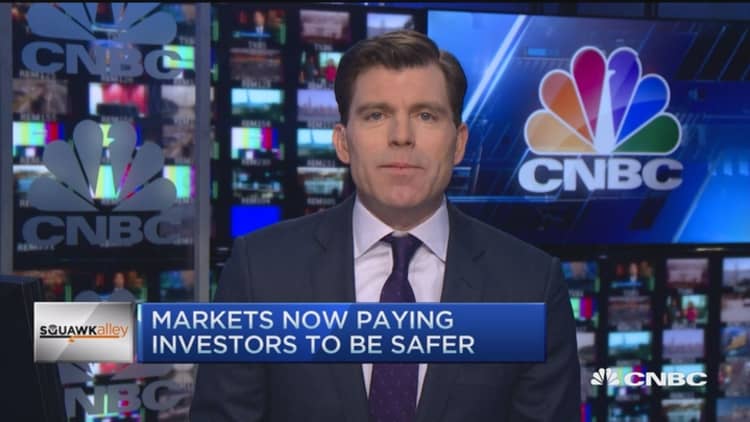
Dumpster-diving investors are eating pretty well so far in 2016.
Stocks' speedy snapback rally since last Thursday's drop in the to a nearly two-year low has been led partly by the most disliked, heavily damaged names. Commentators are disparaging this as a "short-covering" rally, with some merit.
But all rallies following heavy sell-offs feature plenty of short covering. When stocks have fallen "far enough" for the time being and quit going down, the stocks that bearish traders have been leaning on most aggressively move fast.
More interesting is the fact that investors could have positioned in a contrarian way for this kind of reversal by picking up discarded, disliked and discounted stocks — and perhaps still can.
Heading into December, I screened for stocks in the S&P 500 that had dropped at least 10 percent through November and on which Wall Street had given up, with fewer than a quarter of analysts assigning them "buy" ratings. Many of the resulting names were also heavily shorted. A CNBC Pro column on Nov. 30 cited 17 stocks that met these criteria, many from stressed areas within the industrial, energy and consumer sectors, suggesting that they could be turnaround candidates in the New Year.
This basket of stocks has handily outperformed the S&P 500 both since the column appeared and year to date in 2016. Since Nov. 30, the S&P 500 is down 7.4 percent, while the basket of 17 hated stocks is down 4.2 percent. So far in 2016, those 17 stocks as a group are up 0.2 percent, versus the S&P 500's 5.9 percent loss.
That relatively steady performance obscures plenty of wild action in some of the individual names. There are nine winners against eight losers within the group so far this year. Still, Owens-Illinois is down nearly 18 percent and NetApp off more than 8 percent for 2016, offsetting big winners Fossil and Cummins. And since Nov. 30, five of the 17 stocks are off by double digits, indicating how jumpy and hazardous this market has been.

Meantime, of course, the beloved growth stocks that became so popular last year have let down their legion of fans. Facebook, Amazon, Netflix and Alphabet are down an average of 10 percent year to date.
This is a decent reminder that going against the consensus when markets get stretched to extremes can pay off for those willing to ride the scary swings. But the more relevant issue if what this turnabout pattern tells us about market prospects from here.
There are hints beneath the market surface that many victims of last year's global industrial recession panic were punished a bit too harshly. The transportation, industrial and energy sectors are all beating the broad market this year —but on a longer-term chart their recoveries look like fairly modest upward wiggles in a deep downtrend. That could mean either that these are dead cat bounces, or that they are so deeply oversold they have a lot more ground to retake.
For industrials in particular, some strategists who have been, and remain, cautious on the broad market are seeing reasons to believe they represent a good risk-reward bargain.
Jeff deGraaf of Renaissance Macro Advisors fits this description. While not believing the broad market bounce has a great chance of carrying much higher from here, he notes that credit indicators among industrial companies have "improved dramatically." While not pounding the table, he advises: "If one is looking for cyclical exposure, we like the internal action of this group better than energy and materials."
The story of the first half of 2015 was steady-to-rising indexes obscuring dramatic pockets of weakness within cyclical sectors. Could it be that we're now in a market whose fragile indexes chopping in a lower range are disguising pockets of strength within selected cyclical groups?





